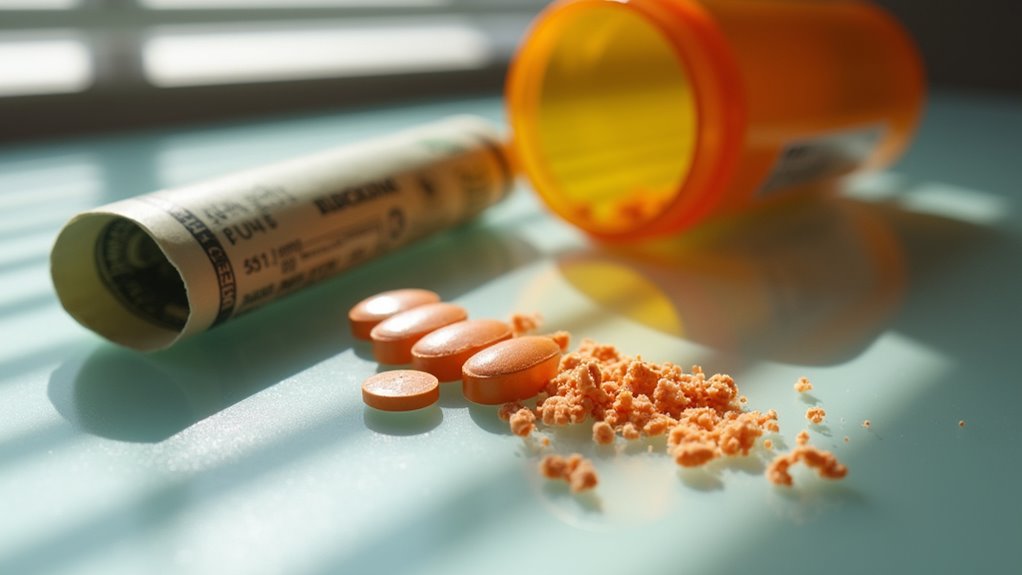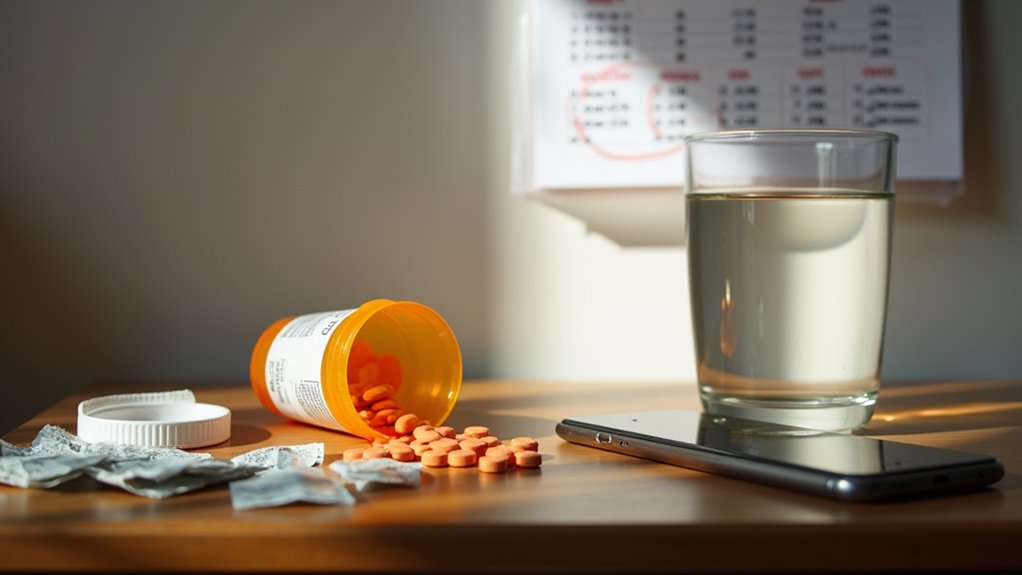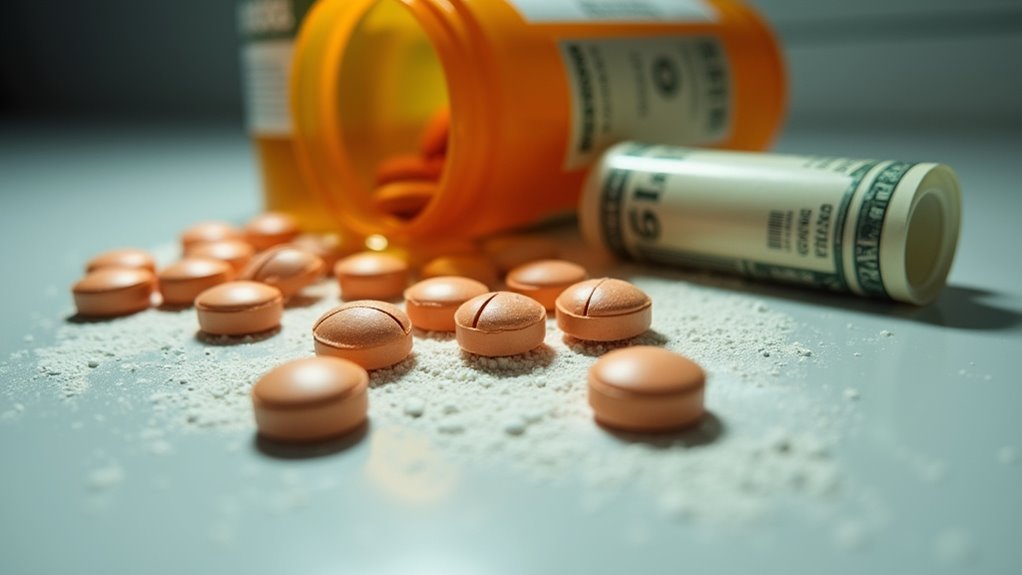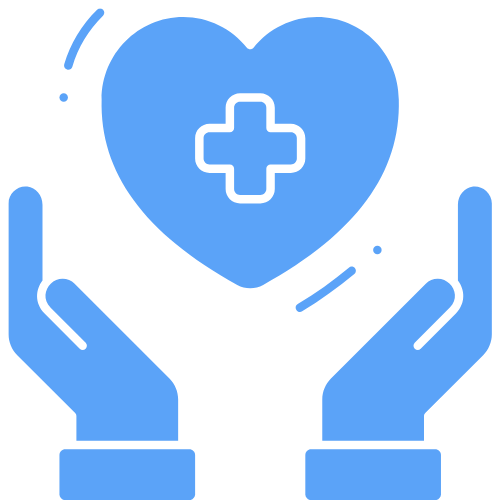Common signs of Suboxone misuse during recovery include obtaining medication from multiple sources, combining it with other substances (especially benzodiazepines or alcohol), and showing increased drowsiness or irregular dosing patterns. You’ll find that nearly half of buprenorphine patients test positive for non-prescribed substances, with individuals in the prime working years facing the highest risk. While formal treatment engagement reduces misuse by 60%, polysubstance use remains a significant challenge that requires extensive monitoring and support strategies.
Understanding Buprenorphine’s Role in Recovery

Buprenorphine’s unique pharmacological profile makes it a cornerstone medication in opioid recovery treatment. Its partial mu-opioid receptor agonism and ceiling effect create a safer therapeutic window compared to full agonists, while its high receptor affinity helps prevent withdrawal symptoms and reduces cravings. These properties directly support medication adherence challenges during recovery.
The medication’s high affinity binding makes it effective at displacing other opioids from receptors, helping prevent relapse during treatment. Its longer half-life enables once-daily dosing, integrating well with psychosocial rehabilitation approaches. The medication’s dual receptor activity and competitive displacement mechanisms help normalize autonomic functions without causing significant sedation or cognitive impairment. Combined with naloxone in formulations like Suboxone, it offers built-in protection against misuse while supporting treatment retention through manageable side effects and convenient dosing schedules.
Key Risk Factors for Suboxone Misuse

Research shows you’re at highest risk for Suboxone misuse if you’re between years 24-34, with this generation displaying nearly triple the likelihood compared to other demographics.
Your treatment history vastly impacts misuse potential, particularly if you’ve experienced delays in accessing proper OUD care or have attempted self-medication without medical supervision. Most individuals who misuse Suboxone do so to prevent withdrawal symptoms rather than to achieve a high.
If you have a history of using multiple substances, especially prescription stimulants, you face almost four times the risk of Suboxone misuse compared to those without polysubstance use patterns.
Age and Treatment History
Key demographic and clinical factors greatly shape the risk profile for Suboxone misuse during addiction recovery. Adults aged 24-34 face nearly triple the risk of misuse compared to older groups, while those aged 35-49 show 2.3x higher odds. Your risk decreases markedly after age 50, likely due to improved treatment adherence behaviors. Proper medical guidance remains essential for preventing misuse and ensuring treatment success. The medication’s ceiling effect helps limit abuse potential compared to full opioid agonists.
Recent data shows that about 75 percent of individuals using buprenorphine products do not engage in misuse behaviors. Formal treatment engagement reduces misuse risk by 60%, with sustained care leading to 75% retention rates at 24 weeks. However, if you experience treatment gaps, you’re more likely to obtain Suboxone through illicit means. Prior treatment history also influences current misuse patterns, especially when combined with limited healthcare access. Intervention strategies and continuous care models specific to your age and treatment background prove most effective in reducing misuse risk.
Polysubstance Use Patterns
Beyond lifespan and treatment history, polysubstance use extensively amplifies the risk of Suboxone misuse during recovery. Clinical data shows that 47.58% of patients receiving buprenorphine test positive for non-prescribed substances, complicating pharmacotherapy considerations. You’ll find that combining Suboxone with other substances, particularly benzodiazepines or alcohol, raises your risk of overdose and treatment failure. Specimens from substance use treatment centers comprised 54.86% of all tested samples. Nearly three-quarters of users reported unsatisfactory or negative outcomes when using buprenorphine-naloxone. Research indicates that annual drug costs reach $740 billion due to treatment complications and healthcare needs.
Managing poly substance dependencies requires understanding common use patterns. If you’re using multiple substances simultaneously or sequentially, you’re three times more likely to experience adverse outcomes. Whether driven by self-medication attempts or withdrawal management, concurrent substance use considerably reduces Suboxone’s effectiveness. Your treatment success depends heavily on addressing these polysubstance patterns, especially when complicated by unmet mental health needs or limited access to integrated care services.
Signs of Non-Medical Buprenorphine Use

Identifying non-medical buprenorphine use involves recognizing five distinct categories of warning signs: sourcing patterns, misuse behaviors, physiological effects, behavioral changes, and dangerous drug combinations.
You’ll notice physiological signs through increased drowsiness, dizziness, and memory issues that worsen over time. Watch for medication dosage changes, like taking more than prescribed or using it in ways not intended. Physical health effects often manifest as excessive sedation, low blood pressure, and heightened sensitivity to side effects. Patients who experience these symptoms may require treatment plan adjustments to prevent further complications. Statistics show that approximately 28 percent of individuals prescribed opioid replacement medications engage in medication diversion.
Key behavioral indicators include engaging in risky activities while impaired, obtaining the medication from multiple sources, or sharing prescriptions with others. The risk intensifies when someone combines Suboxone with alcohol, benzodiazepines, or other central nervous system depressants, potentially leading to dangerous drug interactions and increased overdose potential.
Treatment Program Compliance Challenges
While treatment programs offer evidence-based solutions for opioid use disorder, maintaining compliance presents significant challenges that can derail recovery efforts. Effective patient retention strategies require addressing multiple barriers that impact long-term success, particularly when only 6.3% of individuals with OUD receive proper treatment.
Key compliance challenges include:
- Limited provider expertise in buprenorphine administration, highlighting the need for bolstered staff training requirements
- Patient resistance to medication-assisted treatment due to stigma and misconceptions about recovery
- Inconsistent attendance at psychosocial support sessions, leaving underlying triggers unaddressed
- Financial and geographical barriers preventing regular program participation
Research shows that patients who remain in buprenorphine treatment demonstrate 14.2% lower rates of positive opioid tests and stay in recovery 1.82 times longer than those who don’t. Data indicates that patients in non-metropolitan areas face heightened risks of misuse, emphasizing the need for targeted rural outreach. Addressing these compliance barriers through integrated care approaches remains critical for improving outcomes.
Impact of Polysubstance Use on Recovery
Polysubstance use presents significant barriers to your Suboxone treatment success, with evidence showing a 2.82× higher relapse risk when you’re mixing multiple substances like cocaine and prescription opioids.
Your recovery becomes especially complicated when you’re managing stimulant addiction alongside opioid use disorder, as this combination creates unique cardiovascular and psychological challenges that can interfere with treatment adherence. Studies show 65 to 85 percent of patients in OUD treatment programs engage in polysubstance use, making it a critical factor to address during recovery.
You’ll need specialized treatment strategies that account for multiple drug interactions and heightened overdose risks, particularly when your substance use pattern includes central nervous system depressants or alcohol.
Stimulant Addiction Complicates Treatment
Three major challenges emerge when stimulant addiction intersects with Suboxone treatment during recovery. Clinical stigma and provider training implications create significant barriers, with studies showing a 25-40% reduction in medication-assisted treatment initiation among stimulant users. Historical treatment approaches have led to serious access barriers. A comprehensive evaluation revealed that combined use concerns often deter physicians from prescribing needed medications. You’ll face complex treatment dynamics that require careful monitoring and specialized care protocols.
Studies found that patients prescribed buprenorphine were less likely to use amphetamines compared to those on extended-release naltrexone. Stimulant use increases poisoning risks by 19% while paradoxically decreasing treatment dropout rates by 36%. Rural patients experience greater difficulty accessing integrated treatment services. Provider hesitation stems from outdated clinical guidelines that previously discouraged treating polysubstance users. Treatment retention improves with continued Suboxone use, despite concurrent stimulant addiction.
These findings highlight the need for updated provider training and evidence-based protocols that address both opioid and stimulant dependencies while maintaining patient safety standards.
Recovery Risks During Mixing
Recovery outcomes take a sharp downturn when patients mix Suboxone with other substances during treatment. You’ll face nearly 4 times higher odds of misuse if you’re combining Suboxone with prescription stimulants, with geographic disparities showing 74.7% misuse rates in non-metropolitan areas.
While Suboxone typically maintains 75% retention after 24 weeks, mixing substances drastically undermines these benefits. You’re especially at risk when combining it with CNS depressants or stimulants, which can lead to dangerous cardiovascular complications and respiratory depression. The presence of comorbid conditions further complicates recovery, as polysubstance use intensifies mental health symptoms and creates additional treatment barriers. Your success in recovery depends heavily on avoiding these dangerous combinations and maintaining strict medication adherence under professional supervision.
Multiple Drug Management Strategies
Managing multiple substances during Suboxone treatment presents complex clinical challenges that demand precise dosing strategies. When you’re in recovery and using multiple substances, your clinician must carefully adjust your Suboxone dosage while monitoring potential drug interactions. Effective clinician-patient communication protocols become essential for safety and treatment success. Research shows that higher doses (≥16mg) during initial treatment can significantly reduce early dropout rates.
Key management approaches include:
- Implementing thorough substance screening to detect all drug use patterns
- Adjusting Suboxone doses based on documented poly-substance interactions
- Establishing clear communication channels for reporting medication effects
- Creating individualized treatment plans that address all substance use challenges
Regular monitoring safeguards your safety during treatment, especially when other substances are involved. Your clinician will work to optimize your Suboxone dosage while considering potential interactions with other drugs, aiming to reduce risks and improve recovery outcomes.
Strategies for Preventing Medication Diversion
Preventing medication diversion requires an extensive set of strategic controls and monitoring protocols. Treatment facilities implement tamper resistant packaging and mandatory counseling sessions alongside supervised administration practices to guarantee proper medication use. You’ll find strict oversight through direct observation during dosing, regular urine screenings, and unannounced medication counts.
Healthcare providers utilize abuse-deterrent formulations like Suboxone (buprenorphine-naloxone) and enforce limited prescription quantities with frequent refills. You’re required to follow structured take-home dose policies based on your demonstrated adherence. Clinical teams maintain detailed records of dispensation patterns while conducting routine surveillance of patient behavior.
Through extensive education programs, you’ll learn about proper medication storage, disposal methods, and the serious consequences of diversion, all supported by clear provider-patient agreements outlining treatment expectations.
Building Effective Support Systems
Building a strong support system forms the cornerstone of successful Suboxone treatment and long-term recovery outcomes. You’ll benefit from engaging with peer mentorship programs and attending caregiver education workshops that help create a substantial network of understanding individuals who can support your progression.
A robust support network, including peer mentors and caregivers, is essential for successful Suboxone treatment and sustained recovery.
Key components of an effective support system include:
- Participating in group therapy and 12-step programs to connect with others sharing similar experiences
- Establishing relationships with trained peer mentors who’ve achieved stable recovery
- Involving family members through structured education about medication management and recovery support
- Utilizing technology-enabled support networks for real-time encouragement and accountability
Regular engagement with multidisciplinary care teams, including counselors and social workers, strengthens your support network while improving treatment adherence and reducing relapse risks.
Monitoring Methods and Best Practices
Three essential monitoring methods form the foundation of responsible Suboxone treatment: clinical assessments, medication management protocols, and behavioral supervision. Regular urine screenings and physical evaluations help track patient engagement, while electronic health records guarantee treatment continuity through extensive documentation.
You’ll undergo frequent check-ins with your healthcare team to assess adherence and detect potential misuse. Prescription monitoring programs and pill counts verify proper medication use, while behavioral screening tools evaluate your coping mechanisms and risk factors. Your provider will implement controlled dosing schedules and may adjust doses based on your progress.
Technology-enabled documentation and standardized protocols support these monitoring efforts, allowing your care team to maintain precise oversight while respecting patient dignity and promoting recovery success.
Addressing Treatment Access Barriers
While effective monitoring systems support individual treatment success, widespread barriers continue to limit Suboxone access for many patients who need it. Policy reforms and provider training gaps create significant obstacles, particularly in rural areas where over half of high-need counties lack adequate treatment capacity.
Despite proven treatment success, systemic barriers and provider shortages prevent many patients from accessing life-saving Suboxone therapy, especially in rural communities.
Key access barriers you may encounter include:
- Administrative hurdles from X-waiver requirements and restrictive insurance policies that delay care initiation
- Geographic disparities with limited providers, especially in rural regions where 40% of counties have no waivered prescribers
- Financial constraints due to high treatment costs and insufficient insurance coverage
- Persistent stigma among healthcare providers and staff who lack proper education about medication-assisted treatment
Addressing these systemic barriers requires thorough policy changes, expanded provider training, and improved insurance coverage to guarantee equitable access to evidence-based care.
Frequently Asked Questions
How Long Does Suboxone Stay Detectable in Urine Drug Tests?
You’ll typically see a urine drug test detection window of 1-7 days for Suboxone, though this can extend up to 14 days if metabolites are included in testing.
The suboxone half-life in your body varies based on factors like your metabolism, dosage, and frequency of use. You’ll notice longer detection times if you’re a chronic user, while intermittent use may only show up for 1-3 days.
Specialized testing panels are needed for accurate results.
Can You Safely Switch From Methadone to Suboxone During Recovery?
Yes, you can safely switch from methadone to Suboxone, but your conversion dosage is crucial for success. If you’re on lower methadone doses (<30mg), you'll typically have better outcomes and shorter wait times.
For higher doses (>50mg), you’ll need inpatient supervision to manage potential withdrawal risks. Your patient preference for Suboxone’s benefits, like fewer clinic visits and better quality of life, should be discussed with your healthcare provider to develop a safe changeover plan.
What Happens if You Accidentally Skip a Suboxone Dose?
If you accidentally skip one Suboxone dose, you likely won’t experience significant missed dose symptoms due to the medication’s long half-life. You typically won’t face unintended withdrawal effects from a single missed dose since residual medication remains in your system.
However, don’t take a double dose to make up for it, as this could cause adverse reactions. If you’ve missed multiple doses, contact your healthcare provider before resuming treatment to confirm safe continuation.
Does Insurance Typically Cover Long-Term Suboxone Maintenance Treatment?
Most insurance plans do cover long-term Suboxone maintenance treatment, but coverage limits and requirements vary considerably. You’ll typically need prior authorization, and some plans may impose duration restrictions.
While commercial insurance covers about 46% of extended-release treatments, Medicare covers around 19%. Medicaid often provides the most extensive coverage.
Check with your specific insurer about Suboxone maintenance duration limits and prior authorization requirements before starting treatment.
When Is the Right Time to Begin Tapering off Suboxone?
You’ll know it’s time to begin tapering off Suboxone when you’ve achieved several key benchmarks. Initial, you should maintain stability on your current dose for at least 3-4 weeks without withdrawal symptoms.
Your proper Suboxone tapering schedule should start only after you’ve demonstrated consistent sobriety, emotional stability, and a controlled lifestyle environment. Your provider will help monitor Suboxone withdrawal symptoms throughout the process, adjusting the taper rate based on your individual response.
















